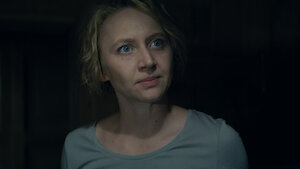Some are popular and some are timeless. For example, a classic black dress by Coco Chanel, a reading of Bukowski, a good and expensive cognac can be considered eternal. But the popular ones are more difficult, because they are very transient trends – over-sized clothes, PlayAmo casino games, electric cars, auteur cinema. It’s about the latter that we’re going to talk about.
Xavier Dolan made his debut as a director of full length at only 20 years old, in 2009, he quickly made it to the Cannes Film Festival and was labeled a “prodigy,” a young genius. Ten years later, critics have lost almost all enthusiasm for Dolan’s films because of the director’s constant self-repeats, but loyal fan-viewers are often ready to go see a new Dolan just because of these constants – constant themes, motifs and techniques.
Autobiographical
All of Xavier Dolan’s films are to some extent based on his personal experience, and many of the recurring plots and themes of his pictures are rooted in the director’s own biography, because Dolan writes all the scripts himself. This has an understandable advantage: In cinema, it is considered important for a director to base his work on personal experience, because that is the most likely to produce something authentic, thoughtful, subtle and, from the point of view of a wide audience, fresh and innovative. In Dolan’s case, the use of personal experience becomes a disadvantage as well: in ten years of directing experience, he has remained very limited in his horizons, very much in lockstep with himself and his story, and so his later films increasingly seem like a record that’s stuck in the turntable.
If you go to a Dolan film, you can be sure that: the main character will be homosexual, like the director himself, and one of the heroines will be a single mother, like Dolan’s mother, who separated from his father when her son was two years old. It is highly likely that the protagonist does not get along with his mother (a single mother), which is one of the main refrains of Dolan’s work. We should also expect the main character to be as creative as the director himself: his characters draw, dream of going to art school, work as creative copywriters, writers or actors. Dolan is simultaneously a director, screenwriter, editor, actor and costume designer. Dolan also often has scenes where the hero or heroes get drunk or take drugs and are under the influence of them, and this too is based on personal experience. As a consequence of all this, the characters in Dolan’s film universe are constantly on emotional swings: they quickly flit from joy to despondency and back again.
Slow Motion
This is one of Dolan’s favorite tricks, and perhaps you could say he even abuses it. Slow motion appears frequently and is inevitable exactly where you’d expect it: in scenes where the mother and son are running towards each other, the hero is running away from pursuit, in flashback scenes, and so on. This predictability eventually becomes tiresome. Clearly, this is Dolan’s way of showing how a short moment turns into an eternity and gets stuck in the character’s head at a certain emotional state, but cinematography has other tools for such tricks.
Close-Ups
Another of Dolan’s favorite tricks is the many close-ups of the actors and the use of plan-details. This is essentially the same thing: the first involves shooting the faces or details of the actors’ faces at very close range, the second involves shooting some object or action at very close range, such as stirring coffee with a spoon or a cupid statue on the wall. This is a time-honored technique for conveying meaning through visual language and enhancing the conveyance of emotion, but when its use turns into endless shots of shaking hands or a tear rolling from an eye, there is a sense of unwarranted self-repetition.
Abuse
The protagonists of Dolan’s films are often physically abused because of their sexual orientation and otherness in relation to others, their singularity. It is usually assault and beating to blood. In many ways this is also autobiographical: statistically, people who openly admit their homosexuality are often physically abused.
Repetitive Mise-en-Scenes
Knowing that you’ll be watching a Xavier Dolan film, it’s easy to predict that at least once during the entire running time you’ll see the picture’s characters in the bathroom, shower or toilet-it won’t be a split second segment, but an entire scene, there will definitely be conversations between several characters at the table during a shared meal, and there will inevitably be a bird’s-eye shot of a car on the road or scenes shot from inside the car. It is very likely that there will also be a karaoke scene.
Pop Culture References
Dolan is reminiscent of teenagers on the social media platform Tumblr, collecting photos and videos of their favorite musicians, screenshots of movies and TV shows they like, magazine shoots they like, and other similar moody things like that on their blogs. The director will always have references to his favorite movies, figures, musicians and actors. Dolan’s entire visual style resembles the typical visuals of a Tumblr blog, and this is partly the secret of the director’s success – it is the approach that many of his fans who grew up on Tumblr like. Pop hits are practically a separate item, because this is one of the peculiarities of Dolan’s style that at first so caught the audience: the director loves to use in the soundtrack really popular songs that have been in radio rotation, but necessarily ones that have a touch of intelligence – Lana Del Rey, Oasis, Adele, The Verve, Viva La Fete and so on.
Confessional Conversations and Dialogues by Eight
It’s highly likely that somewhere along the course of the plot of Dolan’s film there will be a confessional conversation where one of the characters will reveal his secrets and pour out his soul. Another of Dolan’s frequent dialogue techniques is figure-of-eight, where during a conversation the camera switches from a close-up of one character’s face to the face of another depending on who is now speaking.
Memories and Fantasies
The characters in Dolan’s films indulge in fantasies and flashbacks. The son may imagine killing the mother he hates, the mother may dream of her son’s future, the lover will recall the best moments of his life with his lost lover, and so on. Dolan always makes it clear to the viewer what is going on in his characters’ heads.
The Contrast Between the Good Taste of the Young and the Bad Taste of the Older Generation
Xavier Dolan takes on the role of costume designer when he works on his films, and this gives him the opportunity to emphasize the conflict between the hero and his mother: usually the central character of Dolan’s picture is dressed very stylishly, which incidentally also attracts the audience, but Dolan dresses the older generation in a way that reads through the clothes poor taste, bourgeoisness and limitedness.
















